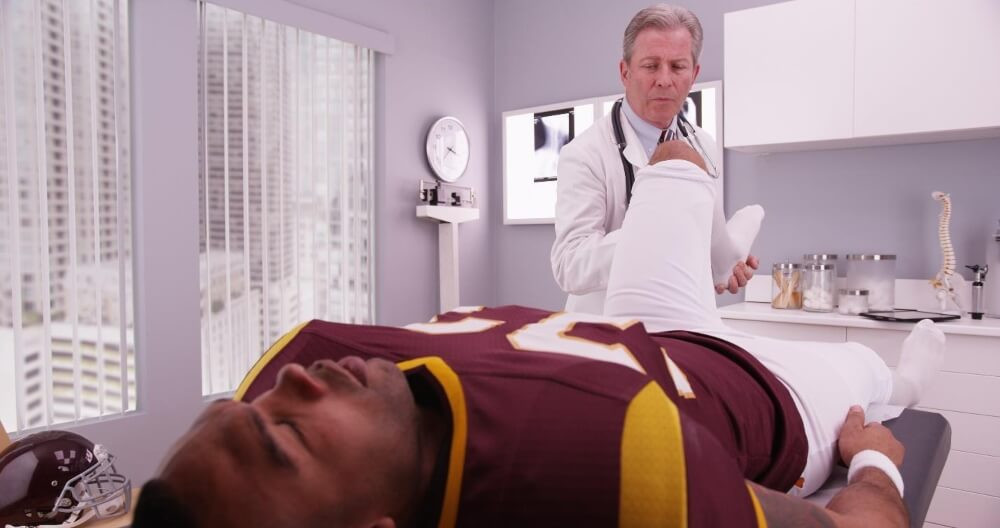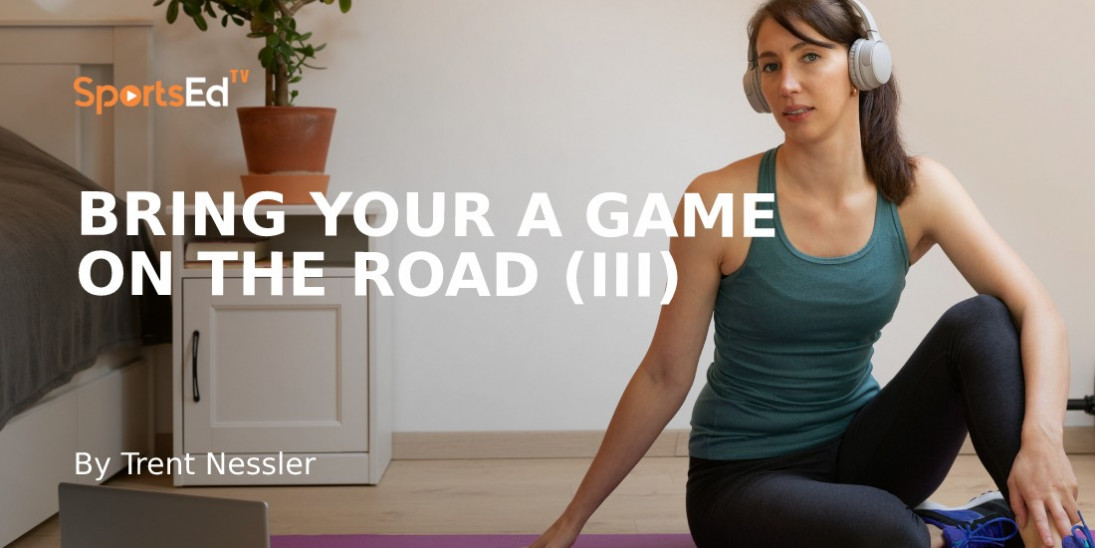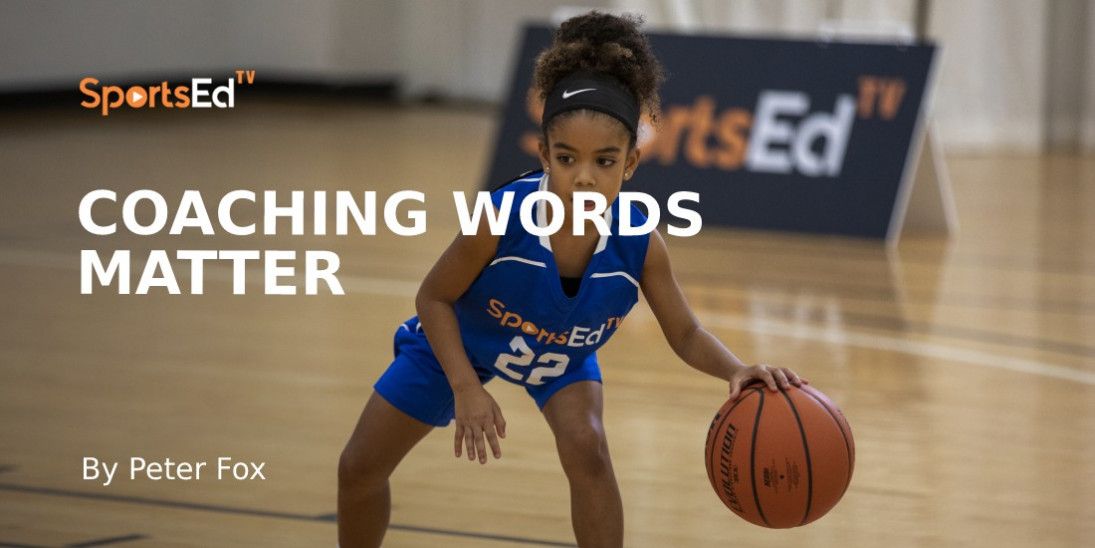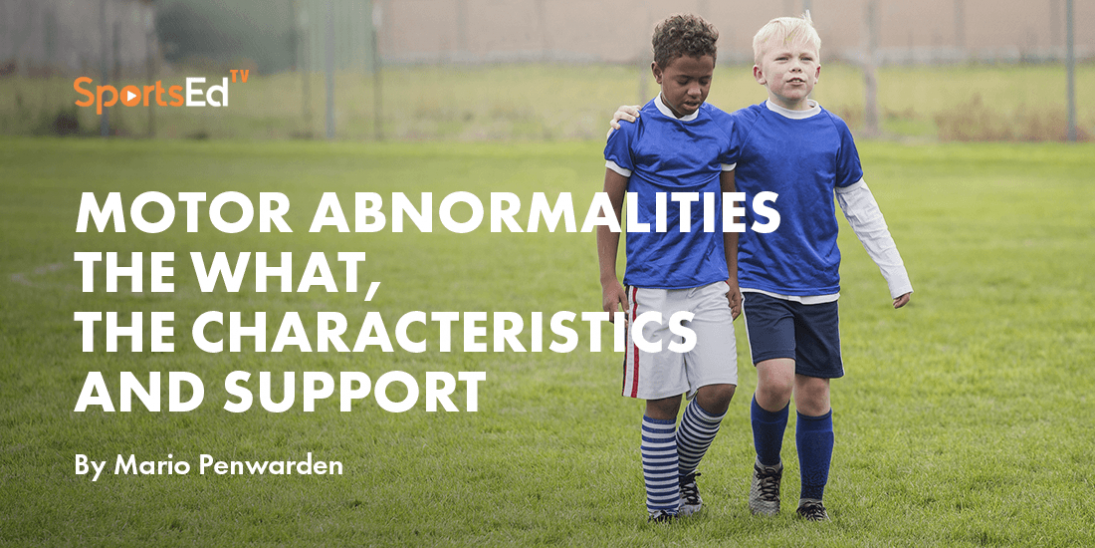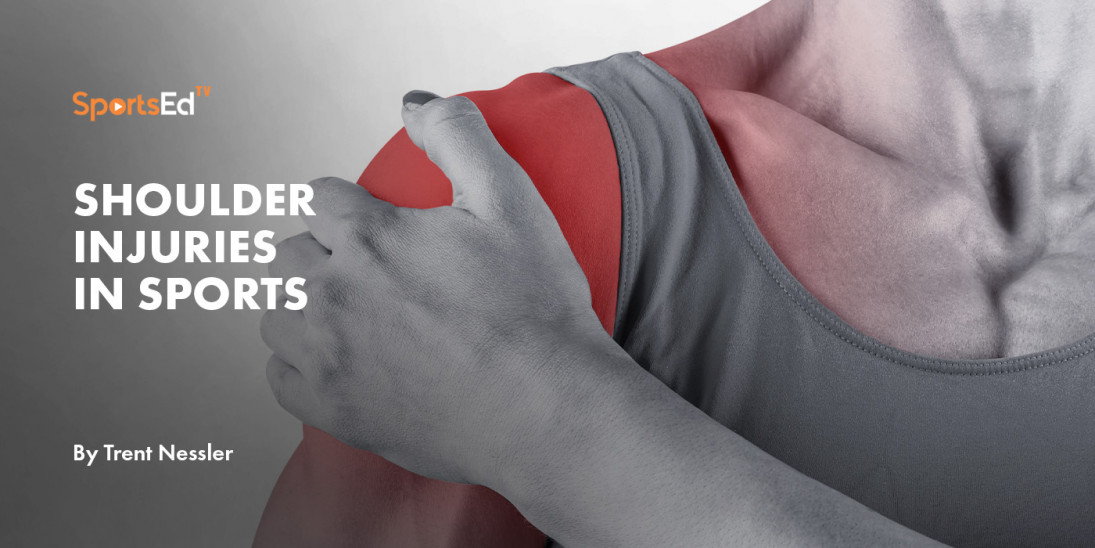Health
Welcome and thanks for visiting...

Sleep for Success!
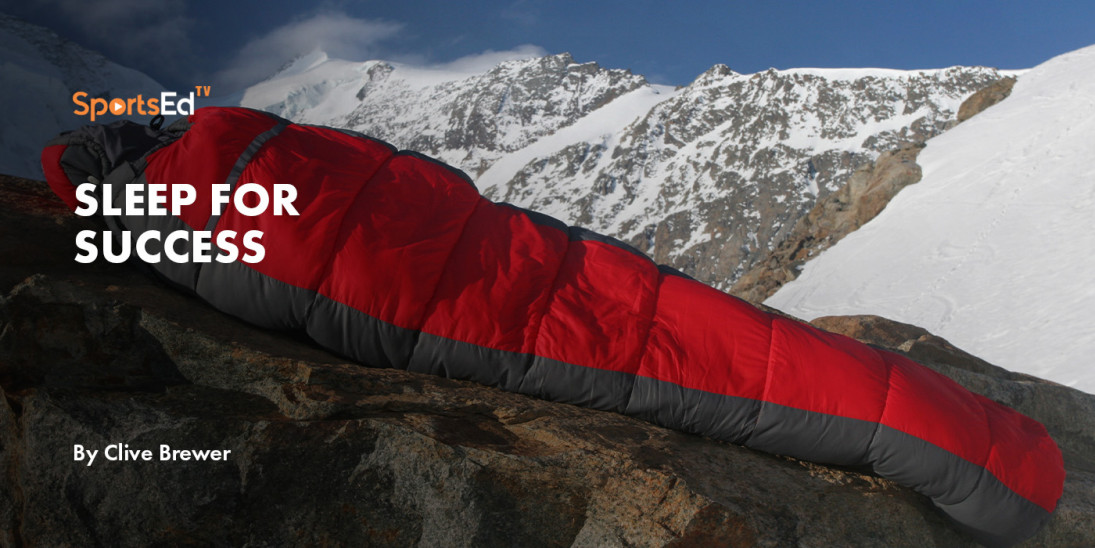
SportsEdTV is committed to bringing athletes, coaches, and parents pro-level basketball education videos for FREE. All levels, anywhere, anytime. Sign up to join our sports community!
In simple terms, performance potential equals fitness minus system losses due to fatigue.
So, we are all familiar with the concept that we give an athlete a training stimulus in order to disrupt their body’s systems, knowing that with appropriate recovery, these systems will recover from the stimulus and adapt to it. In essence, given sufficient recovery, it will repair stronger than it was previously.
Therefore, I have a lot of people asking me to do presentations on recovery or asking me about what they can buy, eat, stand in, etc., to aid the recovery process. There are several things that can be done within periodized programs, but fundamentally, the most important thing that any athlete can do is to ensure that they are getting enough high-quality sleep.
Why is sleep important?
Sleep is essential for survival, and the reality is that many people could use more of it. What occurs during sleep is not really well understood. Scientists agree that it is essential for physical, cognitive, and emotional health and well-being. In extreme forms, sleep deprivation is recognized as a form of torture - but even moderate levels of sleep debt (the difference between what you get and what you need) are associated with under-performance, increased illness, and increased injury/accident risk. Poor sleep has also been linked to issues relating to weight management, with people often gaining weight with poor sleep.
Really relevant to athletes, several research studies have shown that successive days with less than 8 hours of sleep can increase the risk of injury by 1.7 times, recovery to be impaired through decreased muscle protein synthesis, and performance to be reduced through impaired movement function, slowed reaction times, decreased power and decreased information processing speed.
Typically, the more growth and development your body is doing, the greater your sleep needs – so teenagers, for example, might be excused from their prolonged sleep and constant tiredness.
Athletes are typically the same: They undertake high levels of training and, therefore, need 8-10 hours of sleep to recover and adapt to this workload. High-performance sports are also mentally challenging, and this similarly needs recovery to enable optimal functioning and attention to the correct cues in training and competition.
There are 3 recognized stages of sleep, which are cycled through 3-6 times during a healthy night’s sleep.
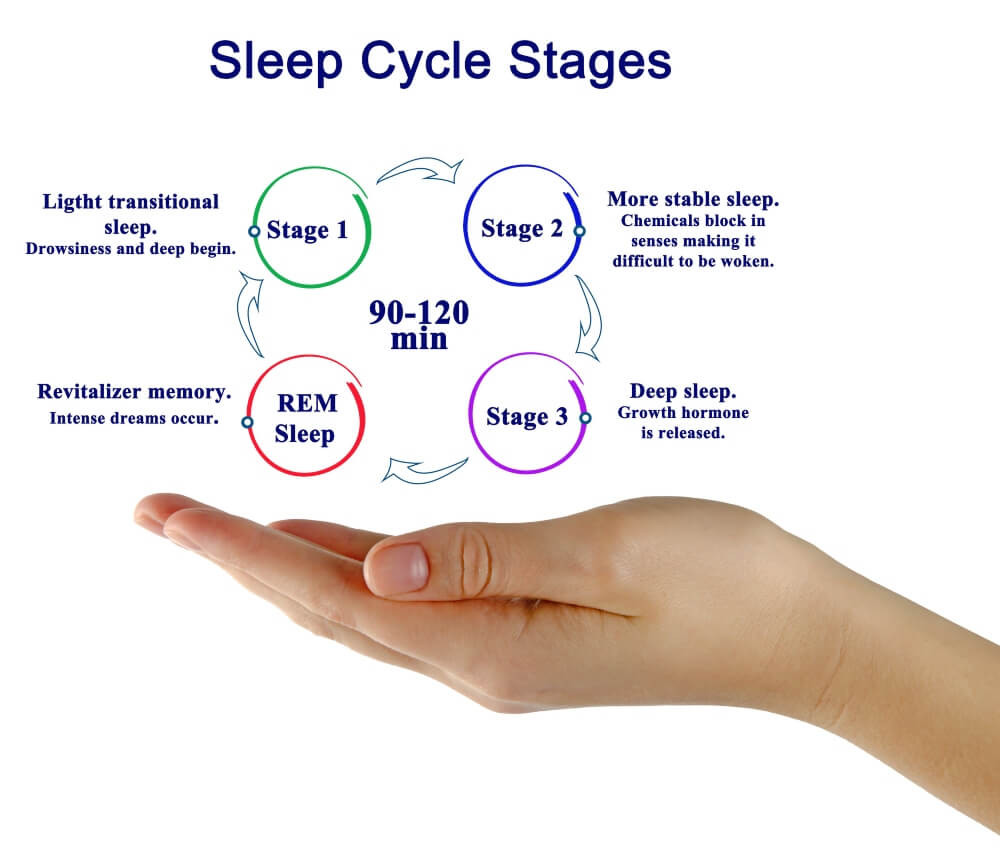
Light sleep
typically makes up 50% of an adult’s full night’s sleep and acts as a transition stage. During this stage, the muscles begin to relax, heart and breathing rates slow down, but the person can still wake up quite easily.
Deep sleep
sees the blood pressure drops, heart and breathing rates lowered but regular, and the limb muscles become relaxed. During this stage, it is difficult to wake someone. The amount of deep sleep a person needs varies greatly between individuals and between different nights. This is intuitive – we often classify someone as a “light” or “heavy” sleeper, for example. Therefore, deep sleep can make up anywhere between 0-35% of total sleep, with the average being 15-20%.
Deep sleep is when the body is thought to recover physically: The internal body temperature is lowered, growth hormone is released, and, assuming correct nutritional status, etc., protein synthesis occurs in the muscles so that muscle tissue repairs and strengthens.
Psychological recovery is also important, and this is thought to occur during the REM (rapid eye movement) sleep stage. This is the final stage in a typical sleep cycle (Light sleep – Deep sleep – REM sleep – Light sleep), and is associated with dreaming, which scientists this is evolutions way of us consolidating memories and laying the foundations for learning and creativity.
Those who measure sleep report that the eyes move rapidly during dreaming (hence the name), breathing can be irregular and sometimes rapid as well as shallow, and heart rate and blood pressure also increase slightly. Again, there is great individual and daily variation in how much REM sleep an adult typically gets, but on average it accounts for 20-30% (1.5 – 2.5hrs) of total sleep time, and this tends to decrease with age.
How can you measure sleep?
We all know when we have slept well, and it usually is not hard to determine the quantity of sleep a person has had. Therefore, monitoring simple athlete responses to questions such as “How many hours did you sleep last night?” and “What was the quality of your sleep from 1-10?” can provide a simple tracking tool that enables you and the athlete to have a measure of their sleeping habits. Sometimes such subjective information is important, as it enables you to question the athlete and start a conversation, showing that you care about them.
The gold standard means is to undertake a sleep study in a sleep laboratory, although this is typically done as a clinical procedure when someone has insomnia (chronic insufficiency of sleep) or other sleep disorders. Actigraphy uses a wrist-worn device to measure movement and muscle activity during continual recordings over multiple days. Sampling at 1000+ hz (taking readings 1000 times every second), the combination of movement sensors, along with temperature and heart rate data, enables the scientist to record sleep patterns in the individual.
Actigraphy is expensive, and there are several cheaper commercially available devices that can detect with reasonable accuracy when an individual is awake or asleep – the level of accuracy typically being dependent upon the number of sensors, frequency of sampling and quality of the processing software.
These devices will break down sleep into stages for the user, but the accuracy of this data is often questioned by experts. However, total sleep is, for the most part, considered to be pretty valid in the recordings, and so may provide a useful measure to monitor over time.
What can I do to help me sleep better?
Unless someone has a clinical condition, sleep can typically be enhanced by looking at 3 key things:
- Sleep hygiene – the behavioral routines that the individual uses around getting to sleep.
- Sleep environment – staging the room and bed to ensure optimal sleep conditions.
- Removing sleep stealers – stimulants that detract from the relaxed state that is needed for sleep to occur.
Establishing a routine
is important for the athlete. As far as possible, they should try and get to bed at the same time every night, and this should be as early before midnight as practical. We know that this isn’t always possible, especially in sports such as baseball, where I frequently had to manage players' sleep after night games and then long-distance travel. Having as much routine as possible enables the body to understand when it is time to start to relax.
When in bed, avoid stimulating the brain by watching TV or playing video games. This phenomenon is a particularly prevalent challenge for the modern-day young athlete, as video games are such an important part of today's youth culture. However, recent research has shown that 150 minutes of video game playing at night causes:
- A delay in falling asleep.
- An average of 30 minutes of total sleep loss.
- A drop in the amount of time spent in REM sleep.
Other notable sleep-stealers that should be avoided in the athletes’ routine include caffeine and alcohol. Avoiding caffeine in the late afternoon and into the evening can enhance the deep sleep a person gets. Replacing drinks high in caffeine with chamomile tea is, according to researchers, associated with an increase in glycine, a chemical that relaxes nerves and muscles and acts as a mild sedative, thus aiding sleep.
Similarly, whilst alcohol makes some sleepy, drinking increased amounts is associated with much higher resting heart rates, poorer neural system recovery and disrupted sleep. Avoiding heavy meals or food eaten late at night is also a good habit to establish for your athletes – this will help them get deep sleep to recover from their demanding training routines.
A power nap
is a great way to revitalize after a day's training if the schedule allows it. However, these should be timed for 20-30 mins so that they do not disrupt the athlete’s nightly sleep. For this reason, they also shouldn’t occur late in the afternoon or evening, and if the player has an evening game or training session, napping too close to this can be disruptive. One strategy that many use is a caffeine nap: This involves drinking a cup of coffee immediately before falling asleep. As caffeine takes approximately 20 minutes to get into the bloodstream and act as a stimulant, when the athlete wakes up, they will feel the energetic effect of the caffeine.
Having a routine is important. This includes having one that an athlete can follow when they have different bedtimes due to factors such as evening games, road travel, etc. Sometimes, getting to sleep after the adrenaline of evening games is particularly tricky, but players should avoid self-medicating with sleep aids as far as possible and be sure to sleep in the following morning. One practice that I never understood is why some players compromise sleep (the biggest recovery aid) to report to a team recovery session the morning after a game, when this can be done at any time of the day!
The bedroom should be seen as somewhere that is for sleep only. Using the bed to watch TV, for example, is a bad habit, as this stimulates the brain whilst the body is trying to relax. It may be beneficial to have a 30-60 min window prior to going to bed where the athlete isn’t having screen time for this reason, although this isn’t always practical or preferred.
Similarly, using a phone to play games or solve puzzles should also be avoided – try and treat the bed as a technology-free zone. Many people also find that it helps to remove a visible clock when they are falling asleep – that way, they respond to their natural fatigue rather than the pressure of time. This also works when waking up – whilst an alarm clock is often necessary, the use of a snooze button should be avoided. If the athlete needs to have more sleep, then the alarm should be set for later and sleep quantity maximized.
Inevitably we all get the occasional night of sleeplessness, where no matter what is tried, the athlete can’t fall asleep. When this occurs, following the 20-minute rule is a good guide – If they can’t sleep after 20 minutes, they should stop trying for a while and change their state of consciousness. This might include reading or going to get a drink of water, for example.
Sleep environment
Many elite athletes who must travel to train and compete try and make their bed on the road as familiar as their bed at home. This includes taking their own pillow with them so that they have a familiar head and neck support. When I was with the Toronto Blue Jays, we would arrange for each hotel to have the players preferred mattress sleep number (where possible – or soft/medium/hard mattress) on the bed for when the players arrived for a road series.
Evolution has desired that we should seek a room to be like a cave: Cool and dark. Using black-out blinds as well as curtains helps to reduce the light that comes in from the outside, and electronic gadgets that emit light should be turned off or covered. Temperature is also important – having a cold room and a warm bed means that the athlete will typically want to “snuggle down” into the covers and relax. Therefore, having the air conditioning set for 65-68 oF (18-20) or colder is recommended, although there is obviously individual preference for this.
Having a quiet environment is also important. Changes in sound will result in the athlete being disturbed as the body responds to the noise. For this reason, practices such as trying to fall asleep with the TV on should be avoided (as well as the flickering light that is produced).
Summary:
An athlete cannot sleep their way to success – without talent, working hard, and optimum training, this does not come, but the foundation stones for reducing the fatigue that training induces are built upon a healthy sleep routine.
Use this article and the below checklist as a starting point for building an education program for athletes that is based on developing sound sleeping habits.
Sleep checklist:
- Treat sleep as a priority.
- Sleep environment – dark, cool, avoid electronics.
- Pre-sleep routine – have a schedule, build in time to progressively relax before going to bed to sleep.
- Minimize screen time an hour before bed.
- Minimize alcohol intake and minimize caffeine later in day.
- Aim for at least 8 hours of sleep each night.
- Aim for 85% sleep efficiency (Sleep efficiency = Time Asleep ÷ Time in Bed).



